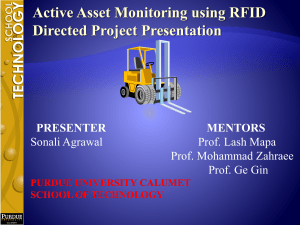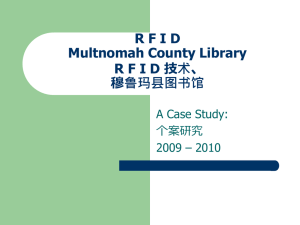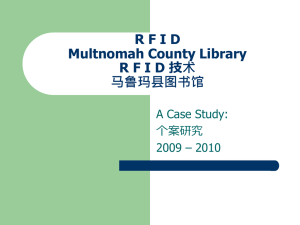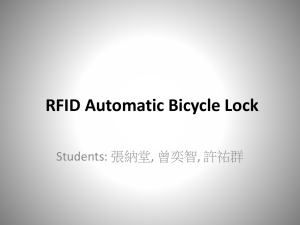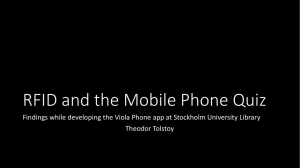RFID_2 - MENA-IUG
advertisement
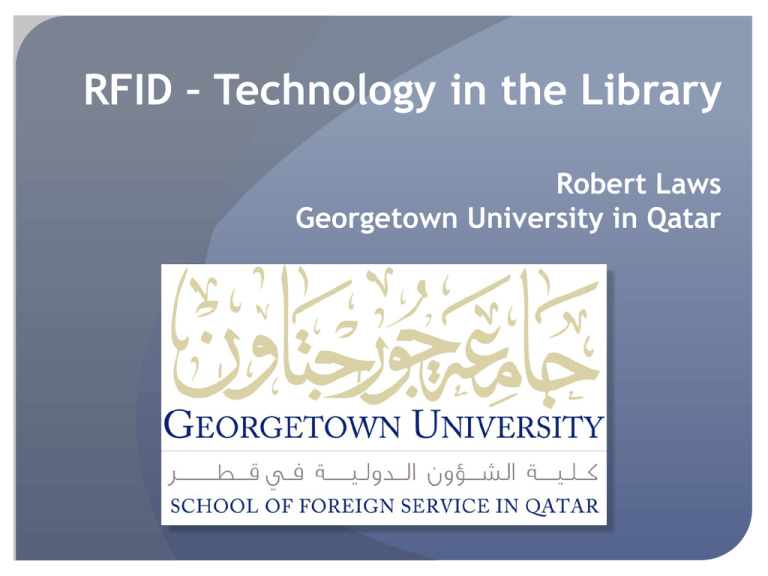
RFID – Technology in the Library Robert Laws Georgetown University in Qatar RFID What is RFID? The Georgetown Experience Technical Considerations Innovative/RFID Configuration Logistical/Staffing Issues RFID – The Basics Radio Frequency Identification (RFID) Radio Waves – High Frequency (HF) 13.56 MHz A scanning device detects the signal from the transponder (the RFID tag) Georgetown Experience The Process Researching the technology and seeking vendors Initial equipment installation and testing Item conversion Launch Upgrades and additions to our system Technical Considerations RFID Tag types Data storage – how much data to encode on tag? Types of tags – standard tags, media tags, etc. Security Gates Sensitivity Proximity considerations RFID Workstation Pads Installation and use Implementing RFID Conversion Process Book Items Media Items Odd Items (Maps, Headphones, Video Equipment) Launch RFID in Action Problems (Software quirks, Tag errors) Continued Technical Services processing RFID – Equipment Staff Workstation Circulation Desk Media Case with RFID Media Security Self-Checkout Station Patron Checking Books Out Receipt of Transaction Patron Checking Books In Inventory using RFID Quicker Circulation Desk Happy Patron! Using RFID with Innovative Options RFID via Millennium Circulation (Page # 107602) 3rd Party Software (3M, Bibliotheca, etc.) SIP2 Protocol SIP2 Circulation Interface (Page # 106375) Associate with a login Enter IP Address of Self-Check workstation Item Status API (Page # 107598) Configuring Item Status API (Page # 107599) RFID Pad Server Options Table (Page # 107600) Configuring RFID in Millennium RFID Server – Required Information Conversion Software Circulation & RFID Software Thank You شكرا


